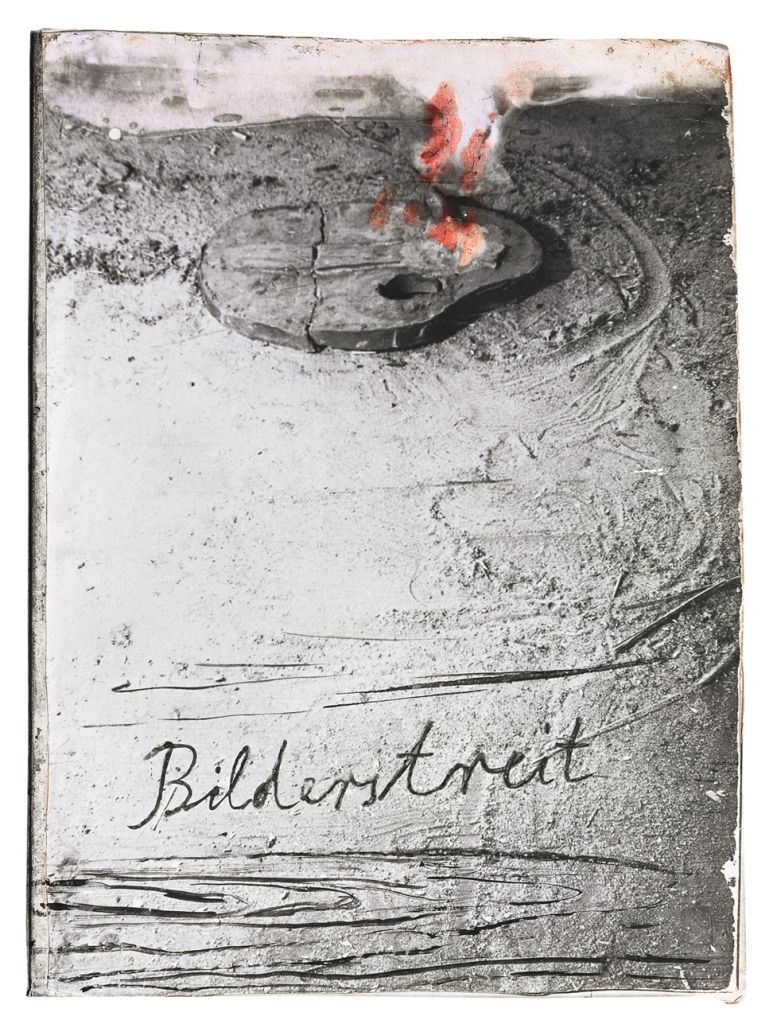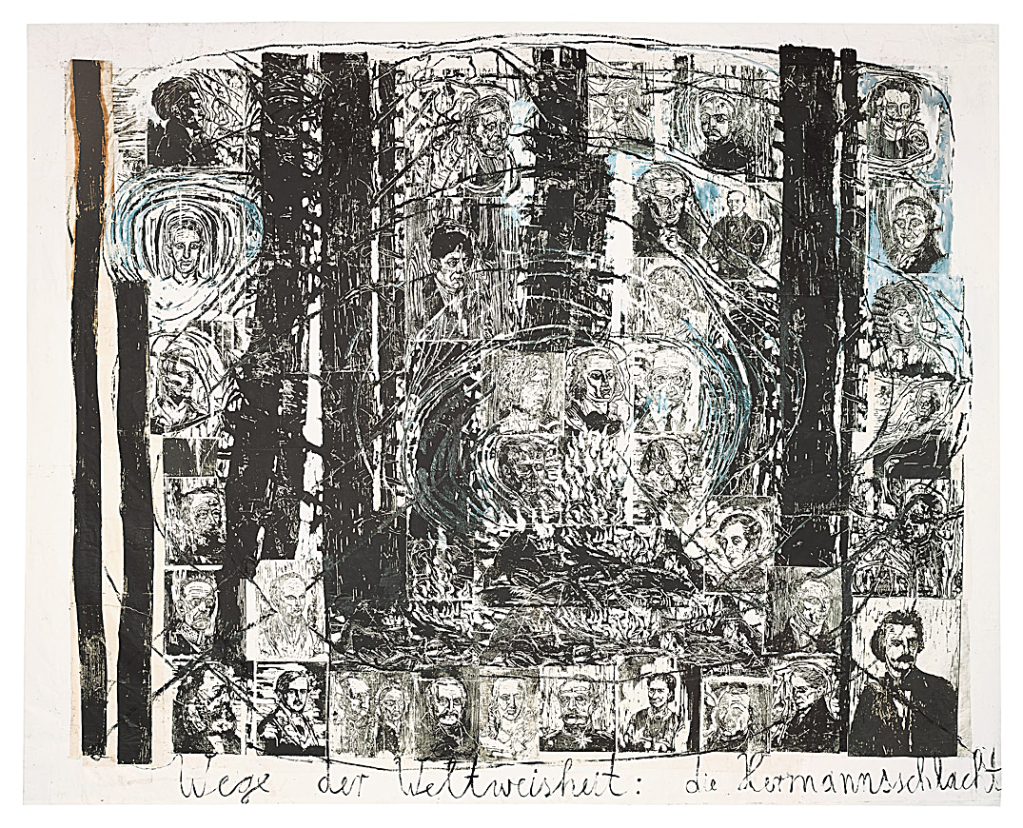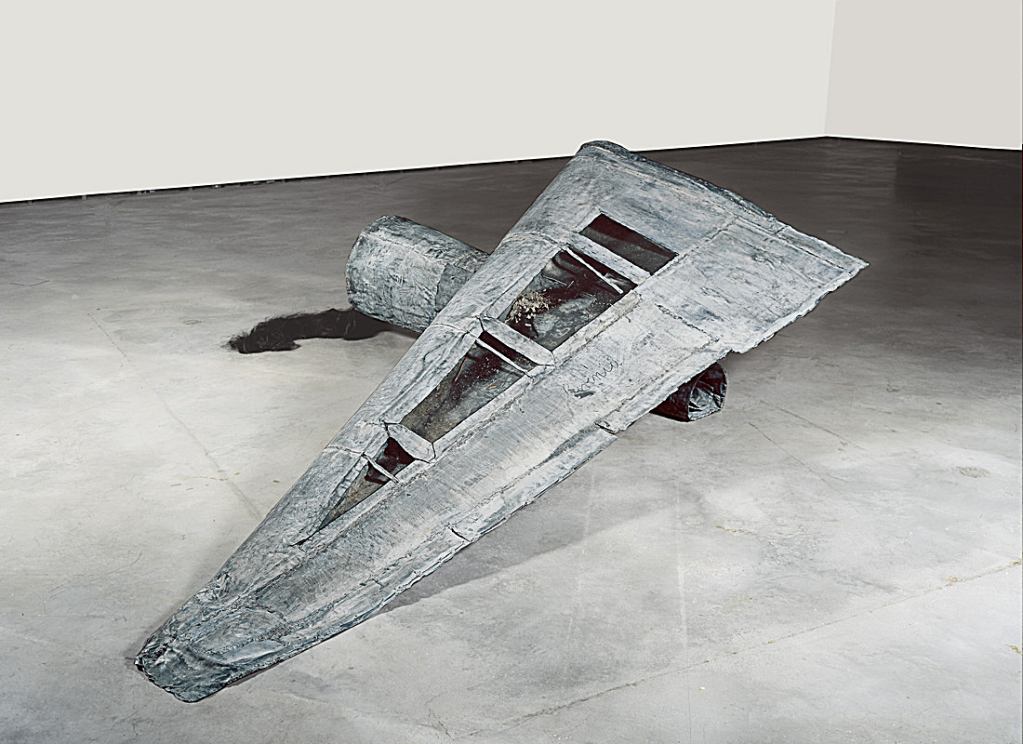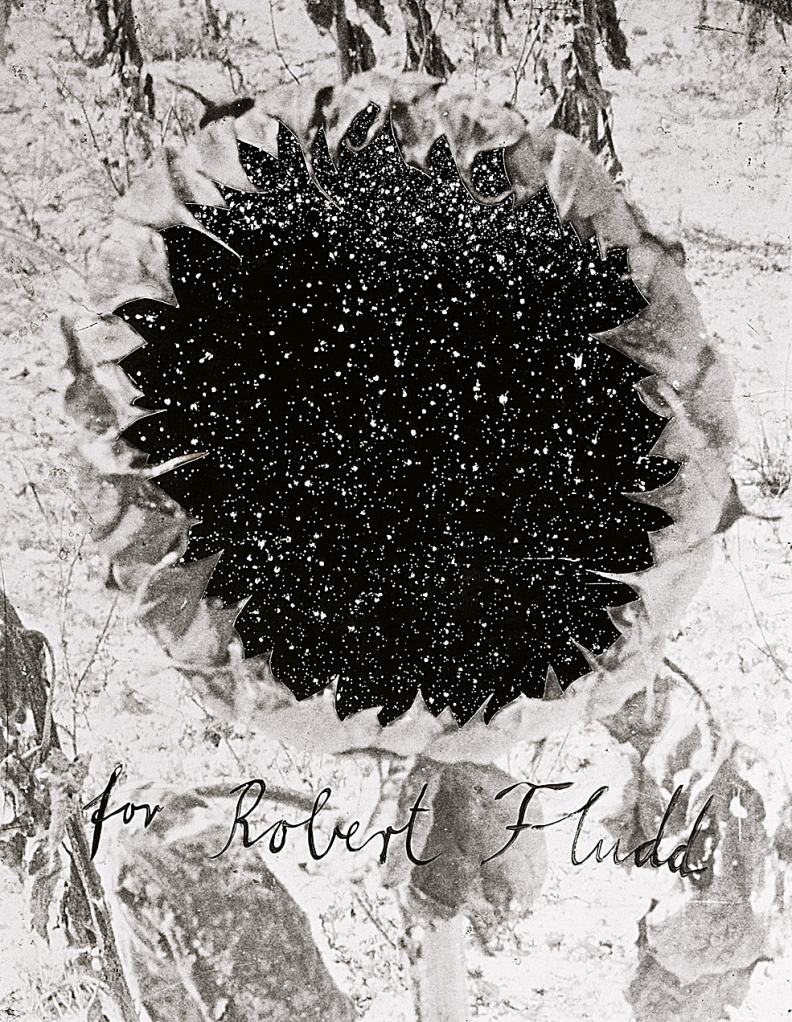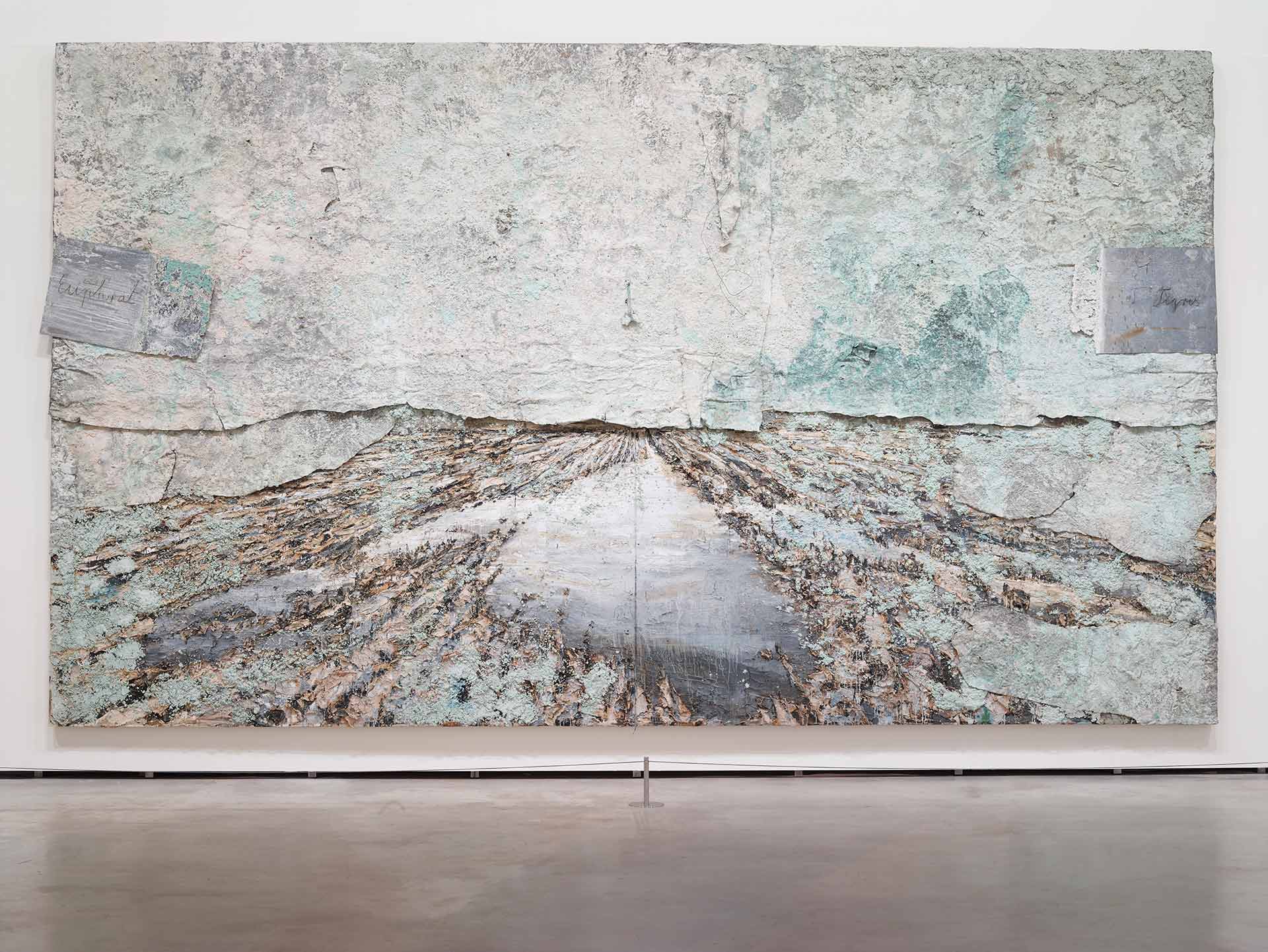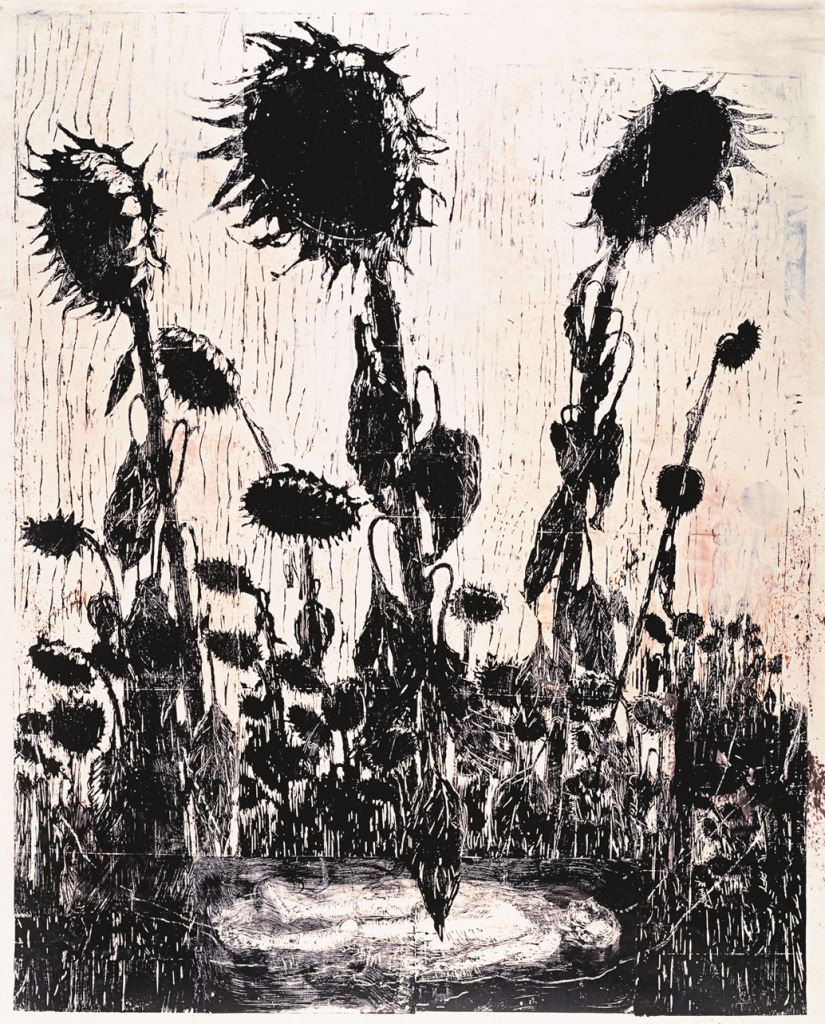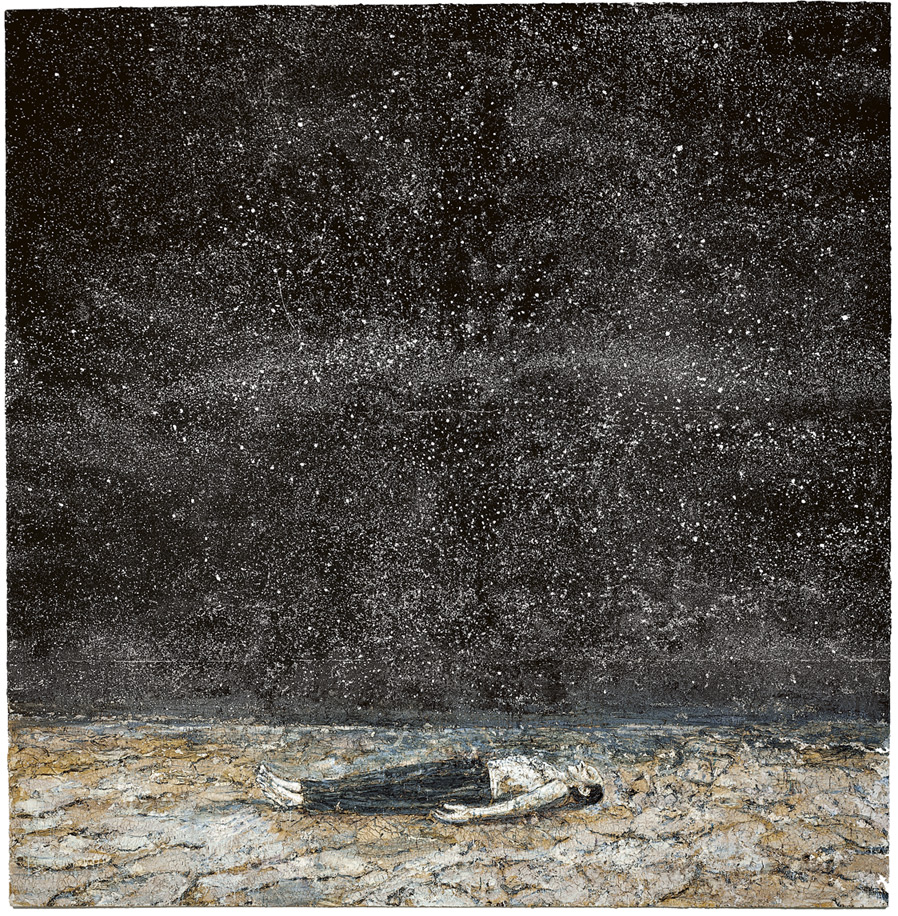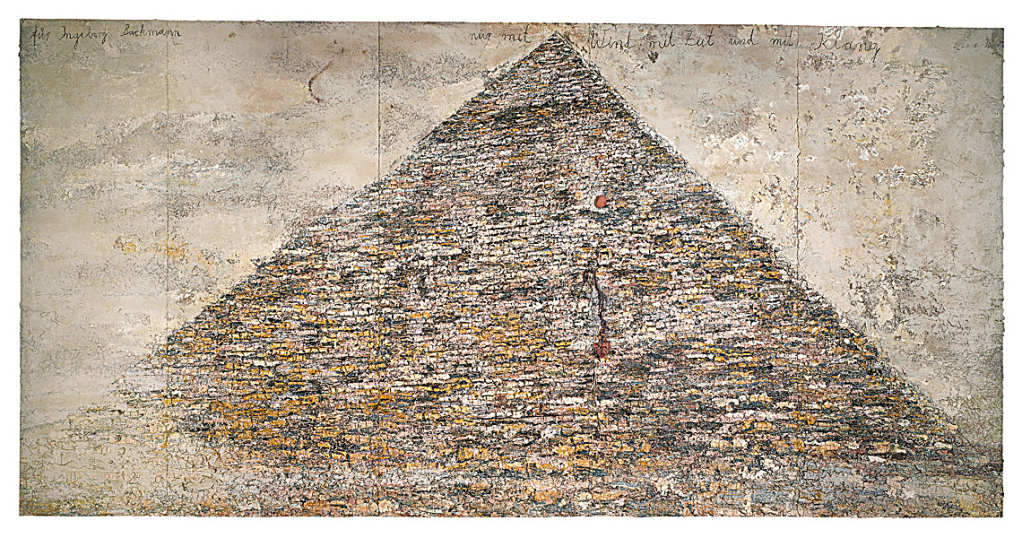Sun-Ship
1984–95Sunflowers, lead, ash, asparagus, and emulsion on canvas330 x 570 x 73 cm
Born in Germany just months before the final European battle of World War II, Anselm Kiefer grew up witnessing the results of modern warfare and the division of his homeland. He also experienced the rebuilding of a fragmented nation and its struggle for renewal. Kiefer dedicated himself to investigating the interwoven patterns of German mythology and history and the way they contributed to the rise of Fascism. He confronted these issues by violating aesthetic taboos and resurrecting sublimated icons. In one of his earliest projects, his 1969 Occupations (Besetzungen) series, Kiefer photographed himself mimicking the Nazi salute at various sites during a journey through Switzerland, France, and Italy. Subsequent paintings—immense landscapes and architectural interiors, often encrusted with sand and straw—invoke Germany's literary and political heritage; references abound to the Nibelung legends and Richard Wagner, Albert Speer's architecture, and Adolf Hitler. Beginning in the mid-1980s, and especially following his move to southern France in the early 1990s, Kiefer's iconography expanded to encompass more universal themes of civilization, culture, and spirituality, drawing upon such sources as the Kabbalah, alchemy, and ancient myth.
The monumental Sun-Ship (Das Sonnenschiff, 1984–95) depicts an expansive tilled field, over which is set a large airplane made of lead, shaped like a paper plane. The motif of the tilled field recurs throughout Kiefer's work, where it alludes to the German countryside, transformed by centuries of cultivation and farming. Here, as elsewhere, Kiefer invokes the role of landscape in the history of German painting, particularly the appropriation—and subsequent discrediting—of the romantic tradition by the Nazis. The highly scarred and ash-covered surface of Sun-Ship—equally typical of Kiefer's paintings—also refers to the devastation incurred by aerial bombing during World War II. The sunflowers borne by the plane, however, might suggest the potential for regeneration.
Source(s):
Nancy Spector. "Anselm Kiefer." In Spector, ed. Guggenheim Museum Collection: A to Z. 3rd rev. ed. New York: Guggenheim Museum, 2009.
Miguel López-Remiro. "Anselm Kiefer." In Guggenheim Museum Bilbao Collection. Bilbao: Guggenheim Museum Bilbao; Madrid: TF Editores, 2009.
"Anselm Kiefer." In The Permanent Collections of the Guggenheim Museums. Bilbao: Guggenheim Museum Bilbao, 2007.
Original title
Das Sonnenschiff
Date
1984–95
Medium/Materials
Sunflowers, lead, ash, asparagus, and emulsion on canvas
Dimensions
330 x 570 x 73 cm
Credit line
Guggenheim Bilbao Museoa

